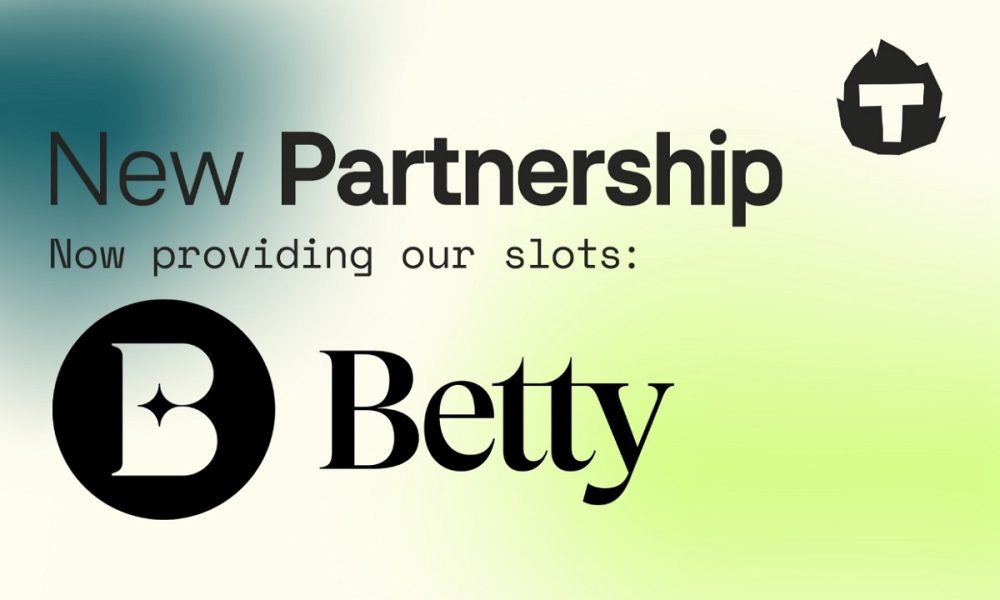

Canada
How Digital Domain Turned the World into a Video Game for ‘Free Guy’
In 20th Century Studios’ Free Guy, the lines between real and digital are deliberately blurred, with the focus jumping between live-action and CG based on the point of view of the characters. For the filmmakers, it was like creating two movies in one, each requiring different techniques, from replacing actors with digidoubles to creating entire CG cities. With only a handful of visual effects studios in the world capable of doing it all, 20th Century Studios turned to veteran VFX house and Oscar® winner, Digital Domain.
“We worked closely with Shawn Levy and the filmmakers to essentially create Free City twice, once by augmenting live-action footage with digital additions, and again as a fully CG environment right out of a video game,” said Nikos Kalaitzidis, Digital Domain VFX supervisor. “There’s really nothing else out there that is quite like it, and that allowed us to do things we’ve never done before.”
The Two Sides of Free City
Free Guy begins with a live-action introduction to the metropolis of Free City, as one of the game’s top players makes his dramatic entrance. As the character “BadAss” plummets toward the city, filmmakers used a combination of digital and practical effects, beginning with footage of the actor in a wire harness suspended by a retractable crane. BadAss soon turns his descent in a low-opening skydive, featuring a CG parachute, landing perfectly in a waiting convertible supercar. To make the transition from the fall to the landing, artists at Digital Domain created digidoubles of the actor, making an otherwise impossible stunt seem natural.
As the car speeds off into Free City, the filmmakers used a multi-camera rig and a crane on the car itself to film on the streets of Boston and against green screens. Digital Domain took that real footage of the car, the actor and the actress in the passenger seat, and created a new set of digi-humans for each performer, along with a CG model of the car. They then switched between live-action and digidoubles as the car dodges grenades, crowds, trees, motorbikes and more, all added by Digital Domain. Using a combination of live city footage with plates and CG buildings, the scene then pans up and through the window of the film’s protagonist Guy (Ryan Reynolds), as he awakes blissfully unaffected by the insanity around him.
Digital Domain began with previsualization, providing the filmmakers with multiple iterations of the city and what the world in general looked like, from both the live-action and game sides. Once Guy begins to gain notoriety, players frequently see his avatar wandering through the digital version of Free City. To create the game setting, Digital Domain used the previs assets, and built over 89 3D environments, created from modular buildings, then altered with different textures and materials. Artists then added individual flourishes by hand to replicate and stylize the real-world locations, including storefronts, residential and commercial buildings and more.
Mixing Worlds
To populate the digital version of Free City, Digital Domain created digital versions of many of the characters, including Guy. To create the digital protagonist, Reynolds went to Digital Domain’s motion capture stages, where the actions for his movements were recorded and added to a library. He participated in a series of facial scans, all of which were combined to create a game-version of Guy that was similar to Reynolds, but slimmed down and stylized.
With Guy’s legend growing, the two worlds blur more and more, leading to a confrontation at a construction site. As two players sent by the developers – one dressed as a pink bunny, the other as a cop – chase Guy into an unfinished skyscraper, Digital Domain created both the interior and exterior of the building. The actors then performed in front of green screens and physical set pieces, allowing the filmmakers to create a superhuman chase.
As the action progresses upward, Guy jumps from floor to floor with inhuman ability, dodging weapons fire throughout. To allow Guy to move with unnatural movement, Digital Domain introduced a digidouble of Reynolds, while also adding additional props and environmental damage to fill out the scene. The environment then begins to morph thanks to the machinations of the game’s programmers. Digital Domain then ensured the shifting building retained the proper scale against the actors, while artists continually adjusted the lighting and textures. Guy eventually reaches the top of the building, where drone and helicopter footage was used to convey the sense of movement. It also gave a foundation for the live-action world outside, which was altered to reflect the fictional city’s skyline.
After falling from the building, Guy selects a “bubble suit,” which allows him to bounce safely – if awkwardly – toward the ground. To create the scene, the filmmakers used a stunt performer on wires positioned against a green screen for close shots, and a digidouble version of Reynolds for the wide shots and the more extreme bounces. Reynolds himself was then filmed in a prop bubble to show Guy after reaching the ground. The footage was then combined with recordings of a fast descent captured by a drone.
Digital Domain also helped to create Free City’s “Multiplayer Lounge,” a location where avatars can mingle, explore in-game weapons and watch feeds of the game world on large jumbotron screens. The multi-story structure regularly features dozens of players, all of which were recorded separately against a blue screen and added later by Digital Domain. The footage of the game – including a memorable moment when the live-action Guy sees a digital version of himself – were also provided by the VFX studio.
Along with the digital version of the main actors, Digital Domain also created an additional 46 3D hero and background assets to help populate Free City.
The End of the World
When Guy grows too popular, the developers decide to reboot the game and start over. The sequence needed a unique look that still honored the game motif, so Digital Domain went back in time. Artists referenced low-res texture mapping and glitches from 80s video games.
The deletion of the world was completed using a relatively new technique known as “data-moshing,” where movement in one layer of footage is applied to another. The result is a scene that looks as if a digital video has been pixelated and damaged. To create this effect, Digital Domain used Houdini to render low-res texture maps, while combining it with Nuke. After a psychedelic final swirl, the world disappears, leaving a white void where only Guy remains.
Rebuilding Actors
Along with the traditional digidouble work and animated characters, Free Guy also marks one of the first feature film uses of Digital Domain’s proprietary face-swapping tool, Charlatan. Utilizing neural networks, Charlatan takes existing footage and analyzes the movements down to the minutia. Artists then introduce a new face digitally constructed by hand, and the neural network in Charlatan matches it with the existing footage, replacing the original performance. Artists can then alter the facial movements to incorporate new expressions.
Late in the film, BadAss gives a speech with far-reaching implications. It’s vital to the plot and tone, and after seeing the finished results, the filmmakers decided that they needed to change the dialogue and add to it for the scene to have the necessary impact. Rather than schedule a new series of reshoots and force the actor back to read a handful of lines, various methods of animating the digital character were employed, with none producing a realistic and acceptable result. So Digital Domain decided to try Charlatan.
Artists created a new facial model of BadAss by hand, then used Charlatan to combine it with the original performance. Once the neural network was able to link the two and replace the original animation, the results were a more realistic digital avatar that could then mimic the actor’s facial mannerisms and movements to mimic reading the new lines. The actor then later recorded the new dialogue in ADR.
“Free Guy was an ambitious project that required expertise in multiple techniques and disciplines to make it. And that’s exactly what Digital Domain was built for,“ said John Fragomeni, global VFX president at Digital Domain. “We worked closely with the filmmakers to help create a unique look and feel for the live-action world of Free City and the gameplay world, and we think audiences are going to be blown away by what they see.”
Free Guy is in theaters now.
Canada
Bragg Gaming Group Enteres into New Financing Agreement with Bank of Montreal

Bragg Gaming Group, a leading global B2B iGaming content and technology provider, announced it has entered into a new financing agreement with the Bank of Montreal (BMO), a leading North American financial institution, pursuant to which BMO has made available to the Company certain credit facilities in a maximum aggregate amount of up to US$6.0 million to support its ongoing working capital and general corporate requirements (the BMO Facilities).
In connection with the closing of the BMO Facilities, Bragg has successfully repaid in full the outstanding promissory note with entities controlled by Doug Fallon (the Prior Note Indebtedness). The new BMO Facilities replace the Prior Note Indebtedness, signalling a significant step in the Company’s financial strategy to partner with a major commercial bank to support its growth.
“We are very pleased to establish this new relationship with the Bank of Montreal, a recognized leader in financial services. This new credit facility strengthens our balance sheet and provides us with a flexible capital structure to execute our strategic plan. The ability to secure financing from a major North American bank underscores the confidence in our business and our long-term growth prospects. We look forward to a long and successful partnership with BMO,” said Robbie Bressler, CFO of Bragg Gaming Group.
The BMO Facilities are secured by, amongst other things, a first-ranking security interest over all of the assets of the Company and certain of its key operating subsidiaries, and are uncommitted and are repayable upon the earlier of (i) demand by BMO, (ii) the occurrence of certain insolvency events, and (iii) on the one-year anniversary of the closing date, unless a one-year extension is granted at BMO’s discretion.
The agreement includes customary legal and financial covenants, including a requirement for the Company to maintain a Total Funded Debt to EBITDA ratio not exceeding 2.50:1.00, and a Fixed Charge Coverage Ratio of not less than 1.25:1.00. These financial covenants are to be tested on a consolidated basis at the end of each fiscal quarter.
The Company currently expects to draw on the BMO Facilities in Canadian dollars, which would result in estimated borrowing costs of 6.9%–7.9% for Prime-based loans or 5.9%–6.9% for CORRA-based loans, depending on the period of the draw and the Company’s leverage ratio. Standby fees on the unused portion of the revolving facility will range from 0.75% to 1.75% per annum, depending on leverage.
Management believes that based on the terms of the BMO Facilities, the Company’s borrowing costs on an annualized basis will be less than half of its Prior Note Debt.
Matevž Mazij, CEO of Bragg Gaming Group, said: “Securing this BMO facility represents a critical milestone in our strategic plan to strengthen Bragg’s financial foundation and accelerate value creation for our shareholders. With our cybersecurity incident contained and our borrowing costs cut by more than half, we are laser-focused on executing our strategic shift toward higher-quality earnings. The Company is prioritizing margin and cash generation over lower-margin revenue, and synergies realized post-quarter end to become a leaner operation. We’ve already realized EUR 2 million in annualized synergies and are on track to achieve our 20% Adjusted EBITDA margin target for the second half of 2025.
“Our recent leadership additions in AI and innovation, combined with our expanding partnerships with operators like Fanatics and Hard Rock Digital, position us to pursue highly accretive growth opportunities methodically. The Company remains focused on growing the business in a sustainable and margin-accretive manner, with strong momentum in the proprietary content and technology pipeline positioning Bragg for long-term profitable growth.
“We understand the importance of delivering results for our shareholders, and our board and management team are fully aligned and committed to executing the strategic initiatives that will drive value. With improved financial flexibility, a strengthened operational foundation, and clear milestones ahead, we believe we have the right strategy and team in place to unlock Bragg’s full potential. We remain committed to maximizing shareholder value as we build sustainable, profitable growth and ensure our strong operational performance translates into appropriate market valuation.”
Cyber Breach Update
The Company has also provided an update on its previously announced cybersecurity incident initially detected on August 16, 2025.
Immediately following detection, Bragg took appropriate steps to mitigate any potential impact of the breach. With the assistance of independent cybersecurity experts, the Company has followed industry best practices and considers that the incident is now resolved.
There continues to be no indication that any personal information was affected and the breach has had no impact on the ability of the Company to continue its operations. Bragg has also provided assurances to its customers regarding the security of its game titles. The Company has experienced no negative impact on its revenue or profitability and does not expect that the cost of responding to the incident will have a material financial impact on the Company.
The Company has already applied knowledge gathered from the investigation of the event to enhance its cyber security defenses.
The post Bragg Gaming Group Enteres into New Financing Agreement with Bank of Montreal appeared first on European Gaming Industry News.
Betty
Thunderkick commits to growth in Ontario with Betty partnership

Independent slots studio Thunderkick has agreed a deal with Ontario-based operator Betty to supply the rapidly growing online casino with a diverse collection of globally popular titles.
Betty, an official partner of sporting franchises Toronto Maple Leafs and Toronto Raptors, has risen to prominence since its 2022 establishment, when it was built following the consultation of 300 casino players to create the optimal iGaming environment.
Distinguishing itself from North American competitors by catering specifically to slot enthusiasts rather than sports bettors, the operator has curated a portfolio of 2,800 games, hand-picked to deliver customers maximum entertainment value.
Thunderkick’s content is the latest to be integrated into Betty’s online casino, and the agreement will see a selection of its most popular titles, including The Wildos 2, Midas Golden Touch 3, and Esqueleto Explosivo 3, made available to a greater number of Ontarian players.
Thunderkick marked its debut in the Canadian province in Q2 of 2024, and has since partnered with a network of leading operators to improve its market position. The collaboration with Betty will further amplify its visibility in a key jurisdiction as the provider looks to reinforce its reputation as a global slot developer.
Svante Sahlström, CCO at Thunderkick, said: “It’s our mission at Thunderkick to go deeper, not wider, in 2025. That means forging meaningful, lasting relationships in target markets as opposed to securing as many commercial deals as possible.
“Since entering Ontario over 12 months ago, we have worked tirelessly to enhance our presence in the province, and working with leading brands such as Betty allows us to bring our unique games to a deeper pool of Canadian players.”
Paraskeva Smirnova, Casino Operations Manager at Betty, added: “Betty’s USP has always been our drive to build a slot portfolio with the very best titles from the industry’s most creative suppliers.
“Thunderkick’s passion for slot development is there for all to see, and the introduction of its games to our casino further elevates the consumer experience.”
The post Thunderkick commits to growth in Ontario with Betty partnership appeared first on Gaming and Gambling Industry in the Americas.
BCLC
Save the Date: BCLC’s New Horizons in Safer Gambling Conference Returns November 2026

BCLC is pleased to announce the return of the New Horizons in Safer Gambling Conference, taking place November 2–4, 2026, at the JW Marriott Parq Vancouver.
This global event brings leading voices in research, policy and industry together to explore innovative approaches to safer gambling. Attendees can expect two days of forward-thinking dialogue, evidence-based insights and collaborative solutions to help shape the future of player health.
Sponsorship Opportunities Now Available
New to the 2026 conference, BCLC is excited to offer sponsorship opportunities to organizations that share BCLC’s passion for safer gambling. Benefits of sponsoring New Horizons 2026 include industry visibility, leadership recognition and meaningful engagement with a global audience. To learn more about sponsorship, please e-mail [email protected].
Registration and program details will be released later this fall.
The post Save the Date: BCLC’s New Horizons in Safer Gambling Conference Returns November 2026 appeared first on Gaming and Gambling Industry in the Americas.
-

 gaming3 years ago
gaming3 years agoODIN by 4Players: Immersive, state-of-the-art in-game audio launches into the next generation of gaming
-
EEG iGaming Directory9 years ago
iSoftBet continues to grow with new release Forest Mania
-
News8 years ago
Softbroke collaborates with Asia Live Tech for the expansion of the service line in the igaming market
-
News7 years ago
Super Bowl LIII: NFL Fans Can Bet on the #1 Sportsbook Review Site Betting-Super-Bowl.com, Providing Free Unbiased and Trusted News, Picks and Predictions
-
iGaming Industry8 years ago
Rick Meitzler appointed to the Indian Gaming Magazine Advisory Board for 2018
-
News7 years ago
REVEALED: Top eSports players set to earn $3.2 million in 2019
-
iGaming Industry8 years ago
French Senator raises Loot Boxes to France’s Gambling Regulator
-
News7 years ago
Exclusive Interview with Miklos Handa (Founder of the email marketing solutions, “MailMike.net”), speaker at Vienna International Gaming Expo 2018









